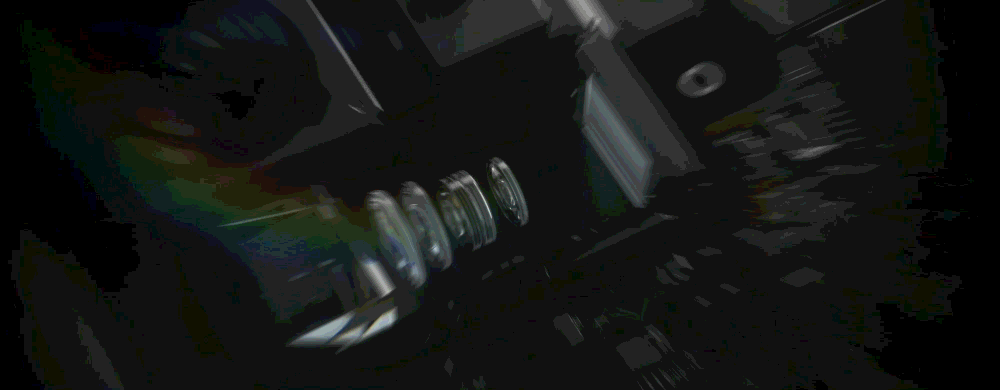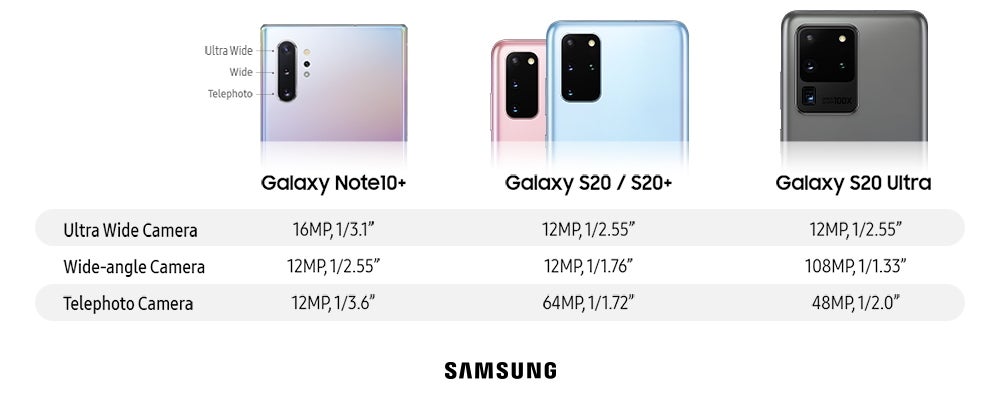Samsung's Galaxy S20 Ultra 100x zoom comparison against a $6000 pro camera kit

Needless to say, the S20 Ultra doesn't fare as good as the $6000 camera kit of Sony, but still the results up until 30x Space Zoom, and especially 10x optical hybrid zoom, are the best you can currently get on a phone.

Samsung Galaxy S20 Ultra camera specs
Samsung's most noteworthy and exclusive S20 series camera specs belong to the Galaxy S20 Ultra:
- First-in-class 108MP sensor with record 2.4 micron Bright Night virtual pixels
- 5x periscope zoom, 10x hybrid optical, 100x digital Space Zoom
- 8K 30fps or 4K HDR 120fps video recording
The telephoto type of "optical" zoom, which has so far produced phones with 2-3x magnification, like recent iPhones, Galaxies, or Mates, is replaced with a periscope zoom type on the S20 Ultra, here's how it works, according to Samsung:
- 48MP Sensor: The sensor on the S20 Ultra is a 48MP sensor which switches between tetra-binning and re-mosaic depending on the shooting conditions, such as brightness level or zoom ratio. Tetra-binning combines 4 pixels into 1, resulting in a 12MP photo with larger pixels. When the RGB pixels are re-arranged with the re-mosaic technology, each pixel operates independently to use a sensor crop and provides up to 10x high ratio zoom.
- Folded lens: The Galaxy S20 Ultra leverages a folded zoom lens to squeeze more zoom capability into a small space. The lens lays flat and is positioned at the bottom of the camera on the phone. Light coming in from the back of the phone is redirected by a prism into the lens, refracting to the right at a 90-degree angle through a series of stacked optical elements which increases the focal length, much like the way a periscope works. Cutting down both the height and width of the camera, we are able to deliver groundbreaking zoom capabilities.
After Huawei announced the P30 Pro with its 5x optical zoom of the periscope type that houses the sensor perpendicular to the lens, it gave an example of the 50x hybrid magnification it is capable of achieving with... a moonshot. Say what you will about such stunts, but this was the most talked about feature in the otherwise excellent phone, creating the most headlines in non-specialized publications.
Google employed the tactic with its new Pixel 4 phones, too, dubbing them as good for... astrophotography, and Samsung continues the trend in the Galaxy S20 Ultra marketing materials, going as far as to write 100x Space Zoom on the big camera island of its most expensive Galaxy S-line phone to date. To what end? Well, check out the zoom comparison above, and stay tuned for many more from our end of the pond.

Galaxy S20 vs Plus camera specs
Follow us on Google News














Things that are NOT allowed:
To help keep our community safe and free from spam, we apply temporary limits to newly created accounts: